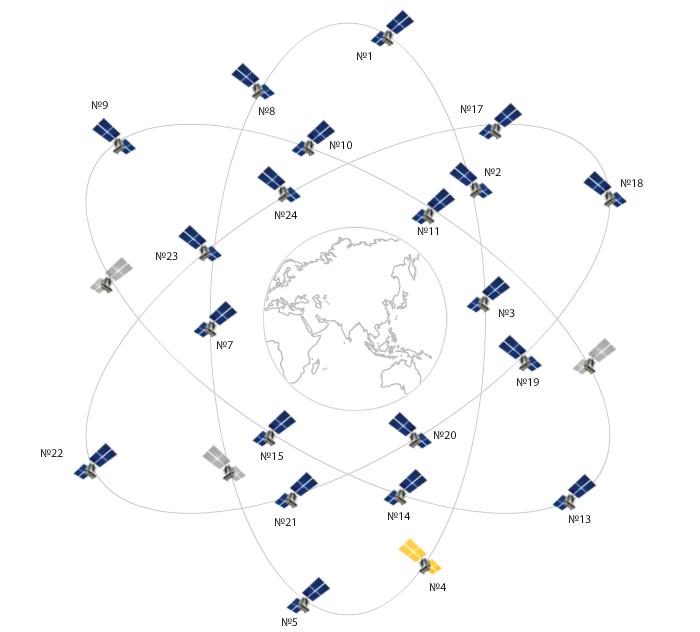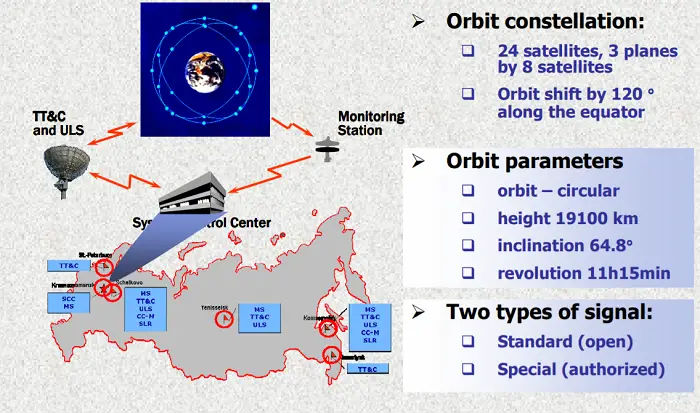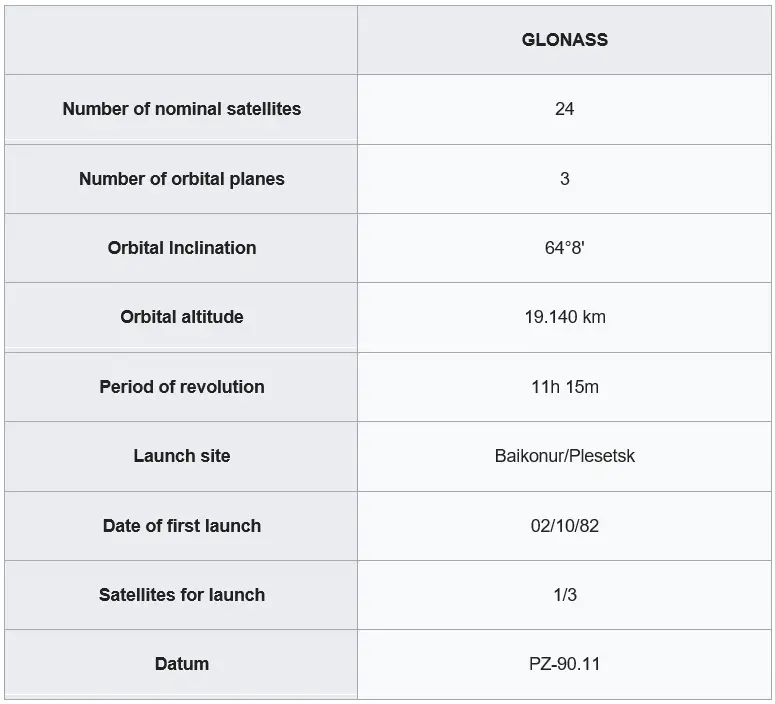GLONASS Orbital Characteristics
A fully operational GLONASS constellation consists of 23 satellites (as on June 05, 2021). All satellites are deployed in three orbital planes. The three orbital planes’ ascending nodes are separated by 120° with each plane containing eight equally spaced satellites.
The orbits are roughly circular, with an inclination of about 64.8°, and orbit the Earth at an altitude of 19,100 km (about 1,060 km lower than GPS satellites), which yields an orbital period of approximately 11 hours, 15 minutes. This means that for a stationary observer the same satellite is visible at the same point in the sky every eight sidereal days. Since there are eight satellites in each orbital plane, satellite positions in the sky get repeated each (although by different satellites).
The planes themselves have a latitude displacement of 15°, which results in the satellites crossing the equator one at a time, instead of three at once.

The overall arrangement is such that, if the constellation is fully populated, a minimum of five satellites are in view from any given point at any given time. Depending on your location, the GLONASS constellation allows vision to a different number of satellites. A GLONASS receiver can compute its position in three dimensions and synchronise with system time if there are at least four satellites in view.
Satellites carry atomic clocks and the payload needed for handling (receiving, processing and transmitting) navigation data. They also have reflectors to allow laser ranging from dedicated ground stations.

Each satellite is identified by a “slot” number, which defines the corresponding orbital plane and the location within the plane; numbers 1–8 are in plane one, 9–16 are in plane two, and 17–24 are in plane three.
A characteristic of the GLONASS constellation is that any given satellite only passes over the exact same spot on the Earth every eighth sidereal day. However, as each orbit plane contains eight satellites, a satellite will pass the same place every sidereal day. For comparison, each GPS satellite passes over the same spot once every sidereal day.
GLONASS constellations are summarized in the following table:

The GLONASS satellite signal identifies the satellite and includes:
- Positioning, velocity and acceleration information for computing satellite locations.
- Satellite health information.
- Offset of GLONASS time from UTC (SU) [Coordinated Universal Time Russia].
- Almanac of all other GLONASS satellites.
Source – ESA



